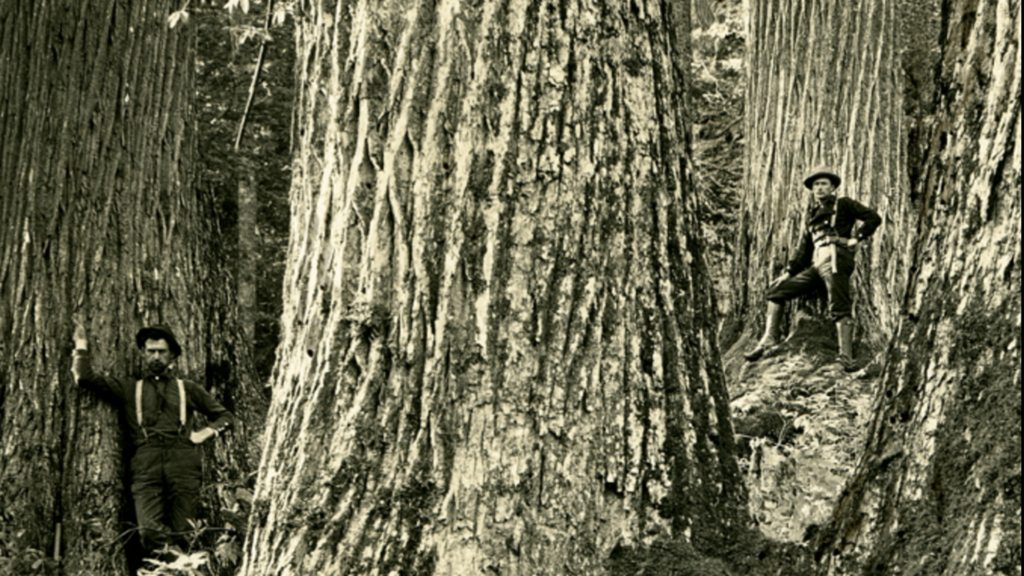Can the Chestnut Return?

Perhaps the greatest ecological in American history in terms of impact on an entire ecosystem is the decline of the American chestnut, which disappeared from forests in the early 20th century due to a blight imported into the nation. The tree is not extinct because the blight doesn’t kick in until the chestnut lives long enough to give out seeds, but the trees never grow anywhere near to full height. Before 1900, the chestnut made up 25% of eastern hardwood forests, making it the most common tree. Oaks have mostly filled that ecological gap. And of course further imported diseases and insects have stressed the eastern forests in recent years, imperiling the elm, the ash, and the eastern hemlock. It’s dire. But because the chestnut hasn’t gone extinct, there is still hope for it and scientists are working on trying to graft a chestnut with its Asian cousins to resist the blight. And interestingly, they are using mountaintop removal sites to try and recover both the tree and the land.
The hillside we’re standing on is former mineland in Coal Township, an hour north of Harrisburg, Pennsylvania. Though Fitzsimmons assures me that at one point the trees on the plot we’re surveying grew in neat rows, there’s nothing neat about them now. The only evidence that this is not a wild place is a tall fence and white plastic tubes around the bottoms of the trees. Fitzsimmons squats to tug at a tube, sweeping dirt and shiny black bits of coal out of the way. In 2014, Fitzsimmons and a team of volunteers with TACF planted hundreds of chestnuts here, driving tubes into the ground to protect the trees as they sprouted. One of the planters was first-time volunteer Liz Schwartz, who remembers saying a little prayer every time she tucked a nut into the hardscrabble.
Six years later, improbably, the chestnuts seem to be thriving, the largest maybe 25 feet tall. Between them, there are yellow poplar, black locust, aspen, sumac, and fire cherry trees, volunteers whose seeds blew in or were dropped by birds or small mammals.
“It’s fascinating to see these sites develop,” Fitzsimmons says. “This is the ‘dog hair stage,’ where the growth is as thick as the hair on a dog and you’re fighting through brambles. In 10 years, we’ll have canopy closure.” Starved for sunlight, the low, barbed bushes will die back. Trees will mature, and shrubbery will spread out. Eventually, “it becomes a forest.”
This is one of 40 plantings on former mining sites across Pennsylvania’s coal region. The reclaimed mines have become unusual nurseries for TACF’s breeding program, which has spent more than three decades trying to create blight-resistant trees. Not much thrives in the torn-up, thin, and acidic soil, but chestnuts seem to love it. Superimpose maps of the historic chestnut range and the coalfields and the two overlap almost exactly.
“I find that the chestnuts especially grow pretty well in rocks,” Fitzsimmons says. “It’s a drainage thing—they really don’t like to have wet feet.” The open landscape means saplings don’t have to compete for sunlight. The acidic ground offers chestnuts the low-pH earth they prefer. And because the topsoil was carried out with the coal, there’s no Phytophthora, a dirt-dwelling, root-rot-causing mold that has plagued chestnut test plantings elsewhere.
Certainly worth a shot and a quite interesting project that deserves more attention. And more funding.
Speaking of trees, I’ve been reading Richard Powers’ The Overstory. Despite the rave reviews, I have to say that it is a terrible novel. It’s like Powers read about Redwood Summer and then wrote some ridiculous character arcs to get his characters out there. If you try to articulate the plot in spoken words, it’s incredible how dumb it sounds. The chestnut is one of the plot lines, which is why I mention it here.


